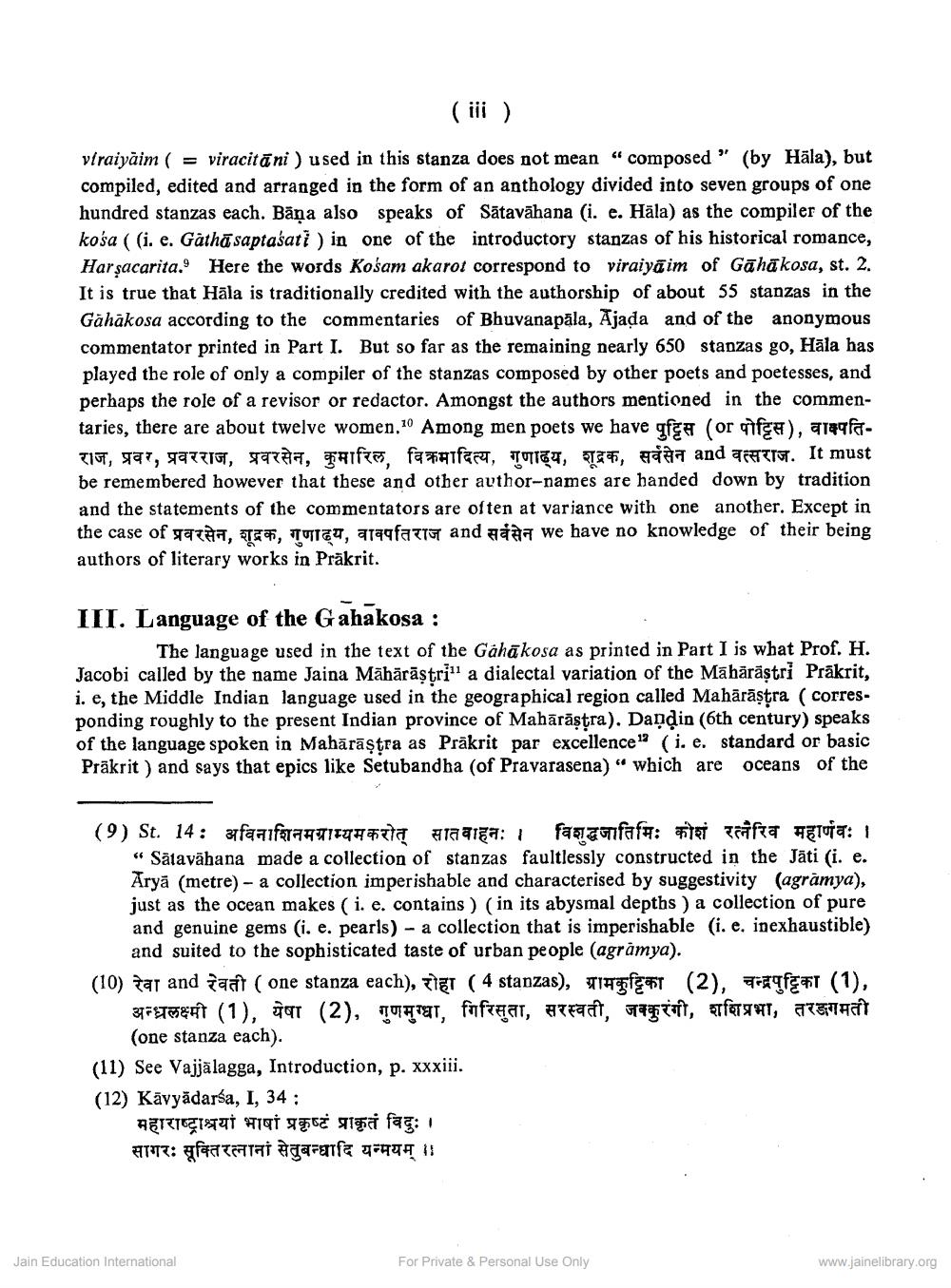________________
viraiyaim ( = viracitāni) used in this stanza does not mean “composed " (by Hāla), but compiled, edited and arranged in the form of an anthology divided into seven groups of one hundred stanzas each. Bāņa also speaks of Sātavāhana (i. e. Hāla) as the compiler of the koša ( (i. e. Gathā saptasati ) in one of the introductory stanzas of his historical romance, Harşacarita. Here the words Kosam akarot correspond to viraiyā im of Gārākosa, st. 2. It is true that Hāla is traditionally credited with the authorship of about 55 stanzas in the Gähäkosa according to the commentaries of Bhuvanapāla, Ajada and of the anonymous commentator printed in Part I. But so far as the remaining nearly 650 stanzas go, Hāla has played the role of only a compiler of the stanzas composed by other poets and poetesses, and perhaps the role of a revisor or redactor. Amongst the authors mentioned in the commentaries, there are about twelve women.10 Among men poets we have qffe (or gifçe), 9149faTIF, gay, 99777, ara, hifzo, fa faca, TTIGT, 75€, gaga and TETS. It must be remembered however that these and other author-names are handed down by tradition and the statements of the commentators are often at variance with one another. Except in the case of gatha, TE, TUZU, arafatis and acan we have no knowledge of their being authors of literary works in Präkrit.
III. Language of the Gahakosa :
The language used in the text of the Gahākosa as printed in Part I is what Prof. H. Jacobi called by the name Jaina Māhārāştri a dialectal variation of the Māhārästri Präkrit, i. e, the Middle Indian language used in the geographical region called Mahārāstra (corresponding roughly to the present Indian province of Mahārāştra). Dandin (6th century) speaks of the language spoken in Mahārāştra as Prākrit par excellence" (i. e. standard or basic Prākrit ) and says that epics like Setubandha (of Pravarasena) " which are oceans of the
(9) St. 14: 3faalfaati4Hala Flaniga: fagufaf#: FIST ofta #tufa: 1
“ Sātavāhana made a collection of stanzas faultlessly constructed in the Jāti (i. e. Aryā (metre) - a collection imperishable and characterised by suggestivity (agrāmya), just as the ocean makes ( i. e. contains ) (in its abysmal depths ) a collection of pure and genuine gems (i. e. pearls) - a collection that is imperishable (i. e, inexhaustible)
and suited to the sophisticated taste of urban people (agramya). (10) tar and gaat (one stanza each), Tigt (4 stanzas), TurfFT (2) fetit (1),
397748 (1), iar (2), TUATEIT, forfraar, atraat, parint, ETTANT, TESTA
(one stanza each). (11) See Vajjālagga, Introduction, p. xxxiii. (12) Kāvyādarśa, I, 34 :
महाराष्ट्राश्रयां भाषां प्रकृष्टं प्राकृतं विदुः । सागरः सूक्तिरत्नानां सेतुबन्धादि यन्मयम् ।।
Jain Education International
For Private & Personal Use Only
www.jainelibrary.org




